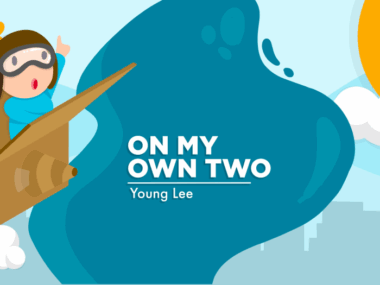A look at how disability models influence our thinking
A doctoral student weighs in on various approaches to interpreting disability
Written by |

Payton Rule, a doctoral student in clinical psychology at Washington University in St. Louis who also has Charcot-Marie-Tooth disease (CMT), knows that while living with a disability can be incredibly challenging, plenty of research shows the many ways that disabled folks live richly and fully. In fact, measuring and analyzing well-being among disabled populations is one of Rule’s academic specialties.
Rule says she wasn’t always this self-assured. When we spoke via video chat a few weeks ago, she told me about times during her childhood when she was afraid of what her CMT diagnosis meant for her future. Because of her disability, Rule sometimes feared her life might be limited and she wouldn’t be able to engage in meaningful activities until she was “fixed” or cured.
I think many of us with CMT would acknowledge that the disease doesn’t necessarily relegate us to a life of struggling alone. But I think we can also understand why Rule felt that way as a child.
2 prisms for viewing disability
According to Rule, such feelings of dread and isolation can be the result of prevailing narratives about disability. In particular, Rule highlighted the popularity of a medical model of disability that permeates much of the way people perceive and talk about members of disabled populations.
The medical model often fixates on the ways bodies affected by disability or chronic conditions differ from the bodies of able-bodied people. Because of this emphasis, folks who understand disability through this lens often maintain that the best way to improve the lives of disabled folks is usually through curing or treating their bodies so that they better match more able bodies.
But there’s another model, Rule says. The social model emphasizes ways society doesn’t accommodate members of the disabled community. It allows space for disabled people who embrace their bodies as they are and don’t believe they need “fixing.”
Rule told me that when she realized there are multiple ways to understand disability, it profoundly affected how she viewed her own disability and her future.
“When I was younger, I often viewed disability through the medical model because that’s what’s prevalent in our society,” she said. “That’s the way most people view disability. But I think that can be hard from a mental health angle because every time you can’t do something, you put it on you [and] your disability. The social model told me, ‘I can do stuff. I can change the environment and advocate for policy change. And if I can’t do something, it’s not always my fault because the world wasn’t designed for me.’”
That doesn’t mean Rule avoids advocating for a cure or better CMT treatments. Rule says that both the medical and social models have useful applications. While the medical model is more individualistic in its approach and the social model tends to highlight the potential for society to change, there will always be interplay between the individual and the society.
“A cure is not the only pathway to well-being with CMT,” Rule said. “There are all these other factors in the world — psychological or mental health factors — things in our environment that are impacting our well-being that we can modify … to improve the well-being of people with disabilities.”
Note: Charcot-Marie-Tooth News is strictly a news and information website about the disease. It does not provide medical advice, diagnosis, or treatment. This content is not intended to be a substitute for professional medical advice, diagnosis, or treatment. Always seek the advice of your physician or other qualified health provider with any questions you may have regarding a medical condition. Never disregard professional medical advice or delay in seeking it because of something you have read on this website. The opinions expressed in this column are not those of Charcot-Marie-Tooth News or its parent company, Bionews, and are intended to spark discussion about issues pertaining to Charcot-Marie-Tooth disease.





Radha
Thank you for the post. I can share it to my son, CMT2A. These kind of posts give hope to the kid and especially to anxious parents. Thank you again.